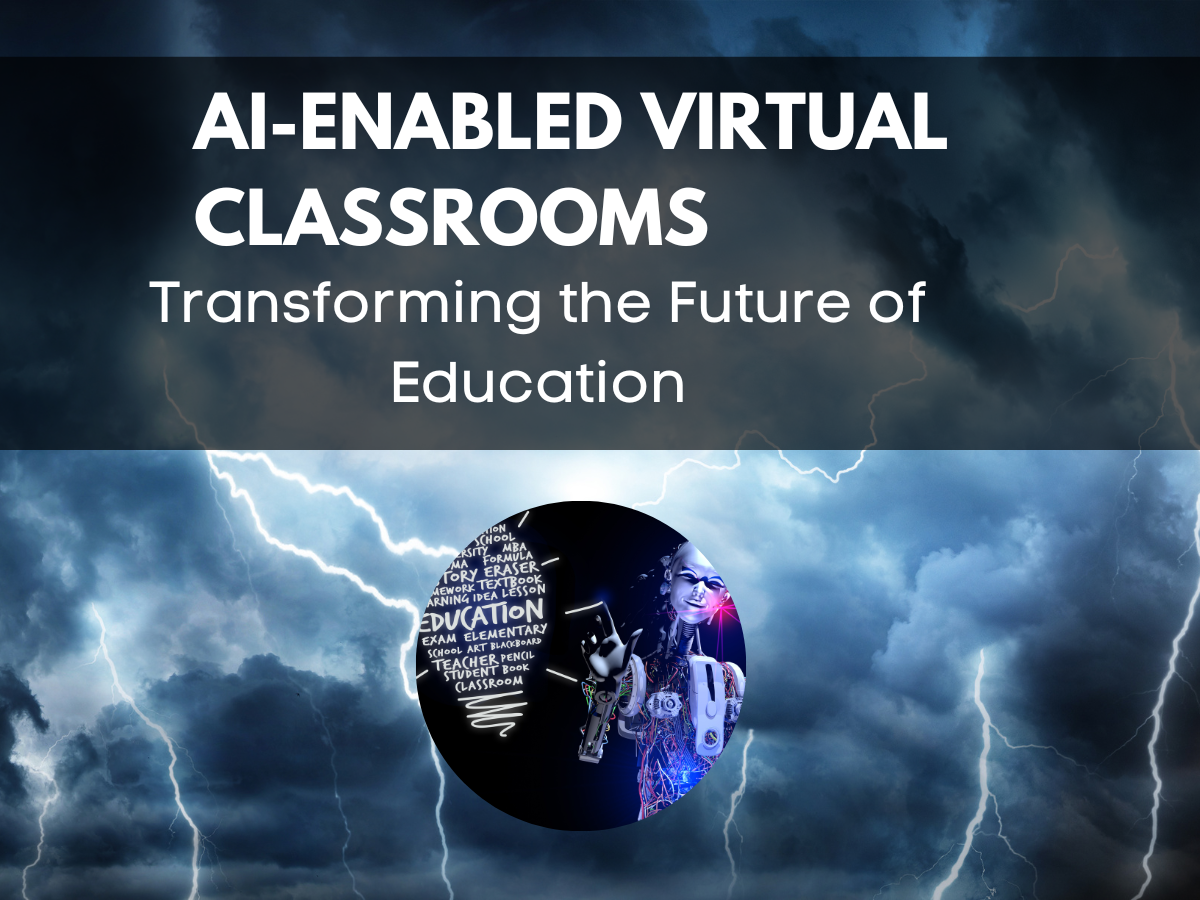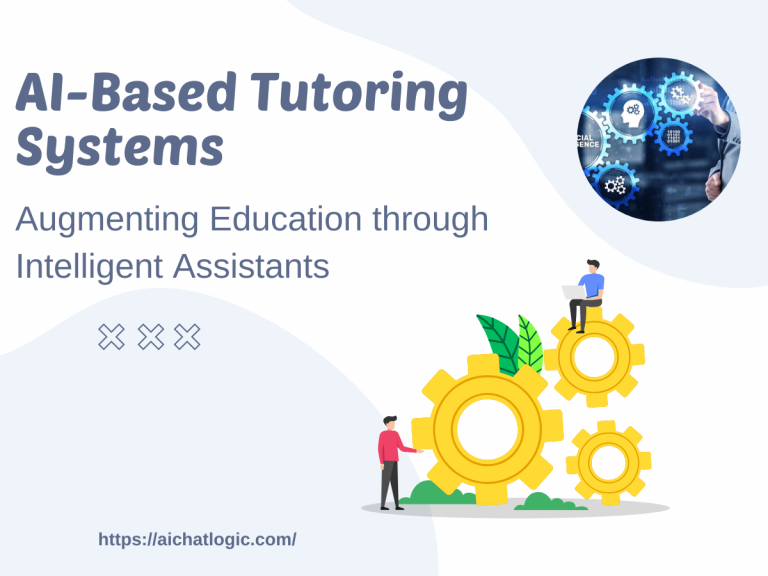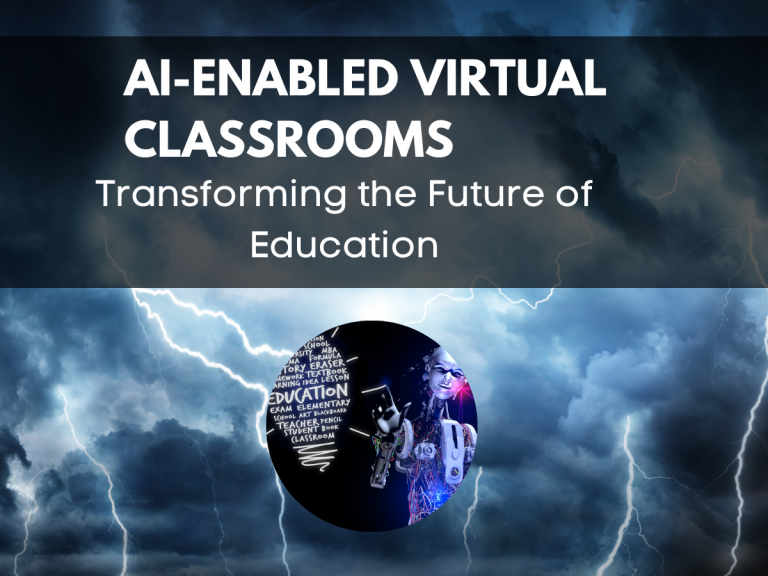1. Introduction:
Education plays a vital role in human development and has undergone substantial changes throughout history. As society progresses, the methods of imparting and acquiring knowledge have evolved. One of the most recent advancements in this transformation is the rise of AI-enabled virtual classrooms.
2. What are AI-Enabled Virtual Classrooms?
AI-enabled virtual classrooms leverage artificial intelligence technologies to create immersive and interactive learning environments. These classrooms integrate AI-powered tools, such as chatbots, virtual reality (VR), and machine learning algorithms, to enhance the learning experience for students and optimize teaching methods for educators.
3. Advantages of AI-Enabled Virtual Classrooms
3.1 Enhanced Personalization and Individualized Learning
One of the significant advantages of AI-enabled virtual classrooms is the ability to provide personalized learning experiences. AI algorithms analyze students’ learning patterns and preferences, enabling adaptive learning paths tailored to their specific needs. Students can learn at their own pace, focusing on areas where they need more assistance, resulting in better engagement and improved outcomes.
3.2 Intelligent Tutoring Systems
AI-powered intelligent tutoring systems offer personalized feedback and guidance to students. These systems use data analytics to identify areas where students struggle and provide targeted interventions. Students receive real-time feedback, enabling them to address their weaknesses effectively and enhance their understanding of the subject matter.
3.3 Real-Time Feedback and Assessment
AI-enabled virtual classrooms facilitate instant feedback and assessment. Automated grading systems save teachers’ time by evaluating assignments and quizzes efficiently. Students receive immediate feedback on their performance, allowing them to track their progress and make necessary improvements.
3.4 Global Access and Inclusivity
AI-enabled virtual classrooms break geographical barriers, providing access to education for students worldwide. Regardless of their location, students can participate in high-quality educational programs offered by renowned institutions. This global access fosters inclusivity, ensuring equal opportunities for learners from diverse backgrounds.
4. How AI Transforms Teaching and Learning
4.1 Adaptive Learning
Adaptive learning is a key aspect of AI-enabled virtual classrooms. Machine learning algorithms analyze students’ performance data and adapt the learning content to suit their individual needs. This personalized approach enables educators to tailor their teaching methods and resources, resulting in more effective learning outcomes.
4.2 Natural Language Processing
AI-powered virtual assistants equipped with natural language processing capabilities assist both students and teachers. Students can ask questions and receive immediate responses, enhancing their learning experience. Teachers, on the other hand, can utilize these virtual assistants to automate administrative tasks, allowing them to focus more on instruction and mentoring.
4.3 Data-Driven Decision Making
AI-enabled virtual classrooms generate vast amounts of data on student performance, engagement, and learning patterns. Educators can leverage this data to make data-driven decisions, identify areas for improvement, and implement targeted interventions. By using analytics and insights derived from AI, teachers can optimize their instructional strategies and improve overall educational outcomes.
5. Overcoming Challenges in AI-Enabled Virtual Classrooms
Although AI-enabled virtual classrooms offer numerous advantages, educators and policymakers must address several challenges to ensure their effective implementation.
5.1 Privacy and Security Concerns
With the use of AI comes concerns about data privacy and security. Educational institutions must prioritize the protection of students’ personal information and ensure robust security measures are in place to safeguard sensitive data.
5.2 Technological Infrastructure
Implementing AI-enabled virtual classrooms requires a robust technological infrastructure. Adequate internet connectivity, reliable hardware, and software systems are essential to deliver seamless and uninterrupted learning experiences.
5.3 Teacher Training and Support
To fully leverage AI-enabled virtual classrooms, teachers require adequate training and support. Professional development programs should be designed to equip educators with the necessary skills and knowledge to effectively integrate AI tools into their teaching practices.
6. Future Implications and Possibilities
The integration of AI in education is still in its early stages, but the potential for future growth is immense. As technology advances, AI-enabled virtual classrooms may become more sophisticated, offering enhanced features like personalized avatars, augmented reality (AR), and adaptive assessments. These advancements have the potential to revolutionize education, making it more engaging, accessible, and inclusive.
7. Conclusion
AI-enabled virtual classrooms have the power to transform the future of education. By leveraging AI technologies, these classrooms provide enhanced personalization, intelligent tutoring, real-time feedback, and global access to education. While challenges exist, addressing privacy concerns, improving technological infrastructure, and providing adequate teacher training can pave the way for the successful integration of AI in education.
8. FAQs
Q1: How can AI-enabled virtual classrooms personalize learning?
AI-enabled virtual classrooms personalize learning by analyzing students’ learning patterns and preferences, adapting the learning content to their specific needs.
Q2: Can AI-enabled virtual classrooms replace traditional classrooms?
AI-enabled virtual classrooms complement traditional classrooms by offering additional learning opportunities and resources. They are not meant to replace face-to-face interactions but to enhance the learning experience.
Q3: Are AI-enabled virtual classrooms accessible to students from all backgrounds?
Yes, AI-enabled virtual classrooms provide global access to education, ensuring equal opportunities for students from diverse backgrounds.
Q4: What challenges need to be addressed for the effective implementation of AI-enabled virtual classrooms?
Challenges such as privacy and security concerns, technological infrastructure, and teacher training and support need to be addressed for the successful implementation of AI-enabled virtual classrooms.
Q5: What does the future hold for AI-enabled virtual classrooms?
The future of AI-enabled virtual classrooms holds immense possibilities, including personalized avatars, augmented reality, and adaptive assessments, making education more engaging and accessible.










+ There are no comments
Add yours